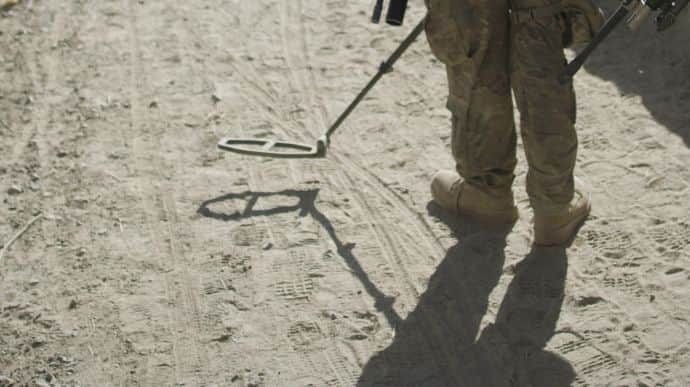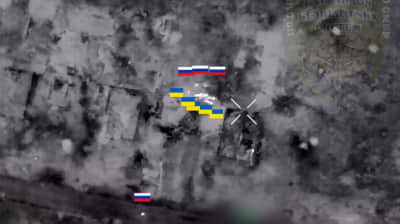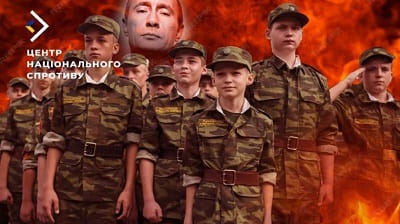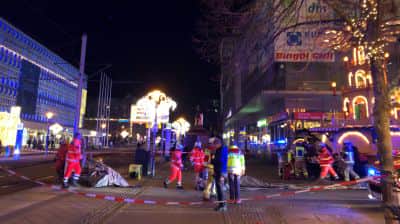The Times on bomb disposal experts near Robotyne: They clear passages through minefields on their knees

Brave Ukrainian bomb disposal experts became the key to the breakthrough near Robotyne, Zaporizhzhia Oblast, during the counteroffensive. They, almost crawling, cleared passageways through minefields for military equipment, and together with the infantry, cleared Russian trenches and captured buildings.
Source: The Times
Details: At the end of August, the Minister of Foreign Affairs of Ukraine, Dmytro Kuleba, told French diplomats how a group of 31 soldiers made it possible to liberate Robotyne: defenders crawled on their stomachs through minefields for 18 hours, then cleared the forest, then walked through minefields again and stormed Russian positions.
Now, The Times, which talked to the mine-clearers and other soldiers, wrote about the heroism of the bomb disposal experts of the 47th mechanised brigade, who cleared the fields near Robotyne.
The media says that in June, when the counteroffensive of the Ukrainian army began, the main hopes were placed on armoured brigades, which were trained in Germany and were equipped with Western Bradley, Leopard and Challenger 2 tanks. However, three months later, the stars of the battle are not tank commanders, but sappers.
Ukrainian units penetrated a little more than 8 miles (about 13 km) in 14 weeks of fighting, and it is the slow work of sappers that determines the pace of the offensive.
Quote from The Times: "These soldiers move no faster than they can walk with their British-supplied Vallon mine detectors. They are grubbing around on their knees with hand-held probes to clear lanes through minefields, often under fire, so that Ukrainian vehicles can pass to the next objective; or else running in with storm units on foot to clear positions of booby traps mid-action."
Quote from a 49-year-old sapper from the 47th brigade who goes by the alias Did ["Grandpa"]: "We all wanted the battle to move faster. But we had no idea how deep the minefields would be, how densely sown with mines.
Everything is mined. The fields, the woods, the vehicle wrecks, the trenches: everything. So we have become the go-to soldiers of the battle, on call like pizza [delivery] men. Got a messy minefield or booby-trapped trench? Get the sappers."
Details: Bradley crews and infantrymen of the 47th Brigade, trained by their own experience of advancing through Russian minefields, speak of the mine-clearers almost enthusiastically.
One of the Bradley gunners, a 41-year-old soldier who goes by the alias Morok ["Darkness"], who was a butcher before the war, told about the recent attack on the Robotyne axis.
After his car hit a mine, a UR-77 demining vehicle parked nearby was hit by artillery, killing two of its crew. However, the four surviving sappers got out of the wreckage and, together with Morok and a group of infantrymen, rushed forward to attack the Russian trench.
Quote from Morok: "The sappers were crazy guys. [They were] running forward with us on foot, all our vehicles wrecked, hurling improvised grenades they had made out of energy bottle drinks and explosives into the Russian trenches. These days we can go nowhere without our sappers."
Details: 25-year-old sapper Artur told The Times that three weeks ago, together with 10 soldiers of the Skala ["Rock"] assault unit of the battalion and another sapper Serhii, he went on a night mission to clear the Russian position on the outskirts of the village of Robotyne, which is located on the first of three of Russian defence lines on the southern part of the front.
Arthur says that no sooner had the Bradleys left the ramps, and the assault groups broke into the first houses, when Russian artillery covered their positions, and the troops opened fire on them from hidden positions.
Shells fell one after another; houses began to collapse around. Despite the intensity of the shelling, the two sappers continued to check the first captured house for mines and booby traps, even as shells repeatedly hit it. Assault troops began to drop dead around them. One of the explosions buried Serhii under rubble, but he was pulled out and continued to work.
Then everything happened again. The sappers again climbed out from under the rubble and tried to do their job. By that time, four out of ten assault troopers were dead.
Arthur was then knocked out of the door by a shell explosion, and when he tried to get up he was knocked down by another. Serhii was wounded in the throat and hand by shrapnel, and he died. Arthur, half-conscious, was dragged back to the Bradley by six fighters of the assault group and evacuated.
Arthur then received a severe concussion; he was released from hospital only a week ago. The shell explosions noticeably slowed his speech, but Arthur had already returned to work in the minefields.
A report published last week by Britain's Royal United Services Institute (RUSI) said minefields along Russia's Surovikin Line had been widened from the usual depth of 120 metres to 500 metres.
The minefields consist of layers of Soviet-era TM-62 anti-tank mines – sometimes tripled to maximise destructive power (the sappers call this technique "hamburger") – and PMN anti-personnel mines combined with new-generation devices and trap mines.
Covered by Russian artillery, these mines repeatedly halted Ukrainian assault operations along the main axis of the counteroffensive south of Orikhiv.
Ukrainska Pravda is the place where you will find the most up-to-date information about everything related to the war in Ukraine. Follow us on Twitter, support us, or become our patron!





